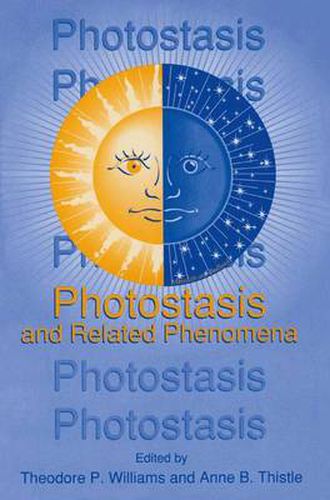Readings Newsletter
Become a Readings Member to make your shopping experience even easier.
Sign in or sign up for free!
You’re not far away from qualifying for FREE standard shipping within Australia
You’ve qualified for FREE standard shipping within Australia
The cart is loading…






This title is printed to order. This book may have been self-published. If so, we cannot guarantee the quality of the content. In the main most books will have gone through the editing process however some may not. We therefore suggest that you be aware of this before ordering this book. If in doubt check either the author or publisher’s details as we are unable to accept any returns unless they are faulty. Please contact us if you have any questions.
Over the weekend of 21-23 February 1997, a small group gathered in Tallahassee, Florida, at the invitation of Ted Williams, to discuss photo stasis and related topics. The majority of participants were former students and colleagues of Ted’s, but an occasional outsider such as myself was generously included. The papers presented there are collected in this volume. The theory of photo stasis was first outlined in a landmark paper by John Penn and Ted, published in 1986 in Experimental Eye Research. They provided compelling data showing that, in the albino rat eye, levels of rhodopsin, outer-segment length, rhodopsin regeneration rate, and even, perhaps, rhodopsin packing density all depend on the levels of cyclic illumination (12 hours light, 12 hours dark) in which the animal was reared. So, for example, there is fourfold less rhodopsin in a retinal extract derived from an animal reared at 400 lux than in an extract from the retina of an animal reared at 3 lux. Animals reared at intermediate levels of light show intermediate amounts of rhodopsin that are correlated with illumination level. What these data immediately suggested is that the photoreceptor cell can adjust its photon-catching ability in response to the levels of light in which an animal is reared, and they also provided a compelling rationale for outer-segment turnover, a phenomenon discovered 20 years earlier by Richard Young but whose function has remained obscure.
$9.00 standard shipping within Australia
FREE standard shipping within Australia for orders over $100.00
Express & International shipping calculated at checkout
This title is printed to order. This book may have been self-published. If so, we cannot guarantee the quality of the content. In the main most books will have gone through the editing process however some may not. We therefore suggest that you be aware of this before ordering this book. If in doubt check either the author or publisher’s details as we are unable to accept any returns unless they are faulty. Please contact us if you have any questions.
Over the weekend of 21-23 February 1997, a small group gathered in Tallahassee, Florida, at the invitation of Ted Williams, to discuss photo stasis and related topics. The majority of participants were former students and colleagues of Ted’s, but an occasional outsider such as myself was generously included. The papers presented there are collected in this volume. The theory of photo stasis was first outlined in a landmark paper by John Penn and Ted, published in 1986 in Experimental Eye Research. They provided compelling data showing that, in the albino rat eye, levels of rhodopsin, outer-segment length, rhodopsin regeneration rate, and even, perhaps, rhodopsin packing density all depend on the levels of cyclic illumination (12 hours light, 12 hours dark) in which the animal was reared. So, for example, there is fourfold less rhodopsin in a retinal extract derived from an animal reared at 400 lux than in an extract from the retina of an animal reared at 3 lux. Animals reared at intermediate levels of light show intermediate amounts of rhodopsin that are correlated with illumination level. What these data immediately suggested is that the photoreceptor cell can adjust its photon-catching ability in response to the levels of light in which an animal is reared, and they also provided a compelling rationale for outer-segment turnover, a phenomenon discovered 20 years earlier by Richard Young but whose function has remained obscure.